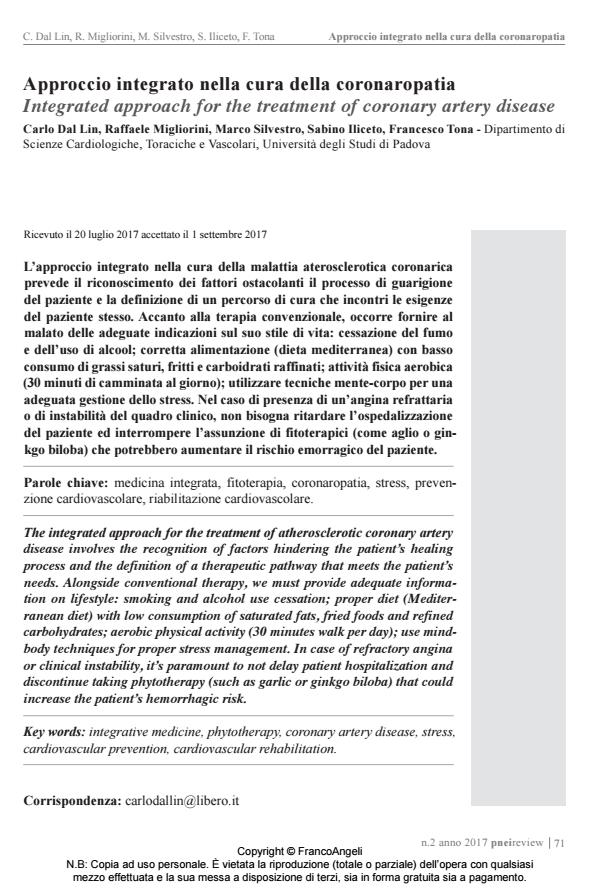Approccio integrato nella cura della coronaropatia
Titolo Rivista PNEI REVIEW
Autori/Curatori Carlo Dal Lin, Raffaele Migliorini, Marco Silvestro, Sabino Iliceto, Francesco Tona
Anno di pubblicazione 2017 Fascicolo 2017/2
Lingua Italiano Numero pagine 10 P. 71-80 Dimensione file 1197 KB
DOI 10.3280/PNEI2017-002007
Il DOI è il codice a barre della proprietà intellettuale: per saperne di più
clicca qui
Qui sotto puoi vedere in anteprima la prima pagina di questo articolo.
Se questo articolo ti interessa, lo puoi acquistare (e scaricare in formato pdf) seguendo le facili indicazioni per acquistare il download credit. Acquista Download Credits per scaricare questo Articolo in formato PDF

FrancoAngeli è membro della Publishers International Linking Association, Inc (PILA)associazione indipendente e non profit per facilitare (attraverso i servizi tecnologici implementati da CrossRef.org) l’accesso degli studiosi ai contenuti digitali nelle pubblicazioni professionali e scientifiche
L’approccio integrato nella cura della malattia aterosclerotica coronarica prevede il riconoscimento dei fattori ostacolanti il processo di guarigione del paziente e la definizione di un percorso di cura che incontri le esigenze del paziente stesso. Accanto alla terapia convenzionale, occorre fornire al malato delle adeguate indicazioni sul suo stile di vita: cessazione del fumo e dell’uso di alcool; corretta alimentazione (dieta mediterranea) con basso consumo di grassi saturi, fritti e carboidrati raffinati; attività fisica aerobica (30 minuti di camminata al giorno); utilizzare tecniche mente-corpo per una adeguata gestione dello stress. Nel caso di presenza di un’angina refrattaria o di instabilità del quadro clinico, non bisogna ritardare l’ospedalizzazione del paziente ed interrompere l’assunzione di fitoterapici (come aglio o ginkgo biloba) che potrebbero aumentare il rischio emorragico del paziente.
Parole chiave:Medicina integrata, fitoterapia, coronaropatia, stress, prevenzione cardiovascolare, riabilitazione cardiovascolare.
Carlo Dal Lin, Raffaele Migliorini, Marco Silvestro, Sabino Iliceto, Francesco Tona, Approccio integrato nella cura della coronaropatia in "PNEI REVIEW" 2/2017, pp 71-80, DOI: 10.3280/PNEI2017-002007